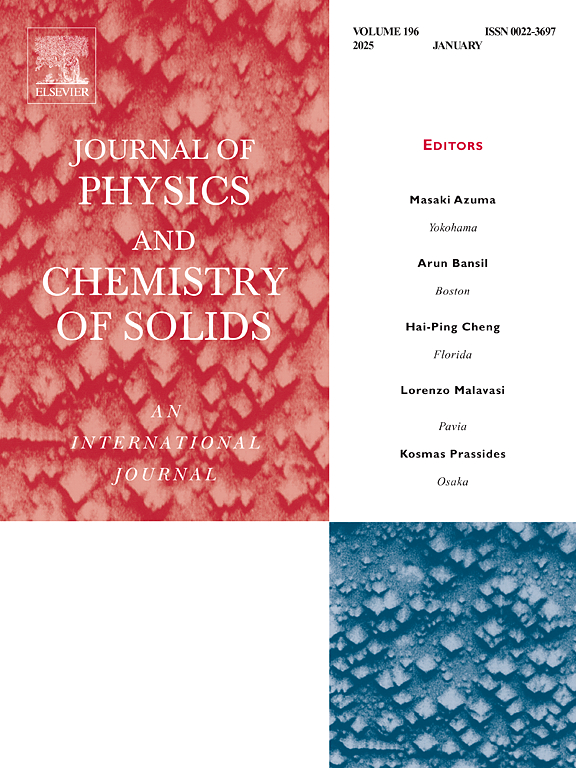Synthesis of Al-doped NaNbO3 rods with enhanced photocatalytic activity
IF 4.3
3区 材料科学
Q2 CHEMISTRY, MULTIDISCIPLINARY
引用次数: 0
Abstract
In this paper, we synthesized NaNbO3 rods with Al(III) (0.00, 0.05 and 0.1 mmol) by the microwave-assisted hydrothermal method and evaluated the influence of doping on photocatalytic activity. The diffractograms reveal the coexistence of two orthorhombic space groups (P21ma and Pbma) for all samples, with the fraction of each varying with the doping concentration. The micrographs show that pure NaNbO3 exhibits a rod-like shape (diameter of ∼200 nm and a length on the order of tens of micrometers). Doping did not induce significant morphological changes; however, the appearance of some cubic grains of varying sizes was observed. The bandgap of the doped samples (3.23 eV) was reduced compared to the pure sample (3.32 eV). The doped samples exhibited superior photocatalytic activity, as evidenced by the removal of the dye Rhodamine B (RhB). The sample containing 0.1 mmol of the impurity ion showed the best photocatalytic discoloration result, achieving 100 % RhB removal in 45 min. The reduced bandgap, greater ability to absorb light, and the lower electron-hole recombination rate (as revealed by photoluminescence emission) contributed to the enhanced photocatalytic performance of the doped samples. Therefore, this study provides a new a reference for future investigations into NaNbO3 doping for photocatalytic applications.

求助全文
约1分钟内获得全文
求助全文
来源期刊
CiteScore
7.80
自引率
2.50%
发文量
605
审稿时长
40 days
期刊介绍:
The Journal of Physics and Chemistry of Solids is a well-established international medium for publication of archival research in condensed matter and materials sciences. Areas of interest broadly include experimental and theoretical research on electronic, magnetic, spectroscopic and structural properties as well as the statistical mechanics and thermodynamics of materials. The focus is on gaining physical and chemical insight into the properties and potential applications of condensed matter systems.
Within the broad scope of the journal, beyond regular contributions, the editors have identified submissions in the following areas of physics and chemistry of solids to be of special current interest to the journal:
Low-dimensional systems
Exotic states of quantum electron matter including topological phases
Energy conversion and storage
Interfaces, nanoparticles and catalysts.

 求助内容:
求助内容: 应助结果提醒方式:
应助结果提醒方式:


